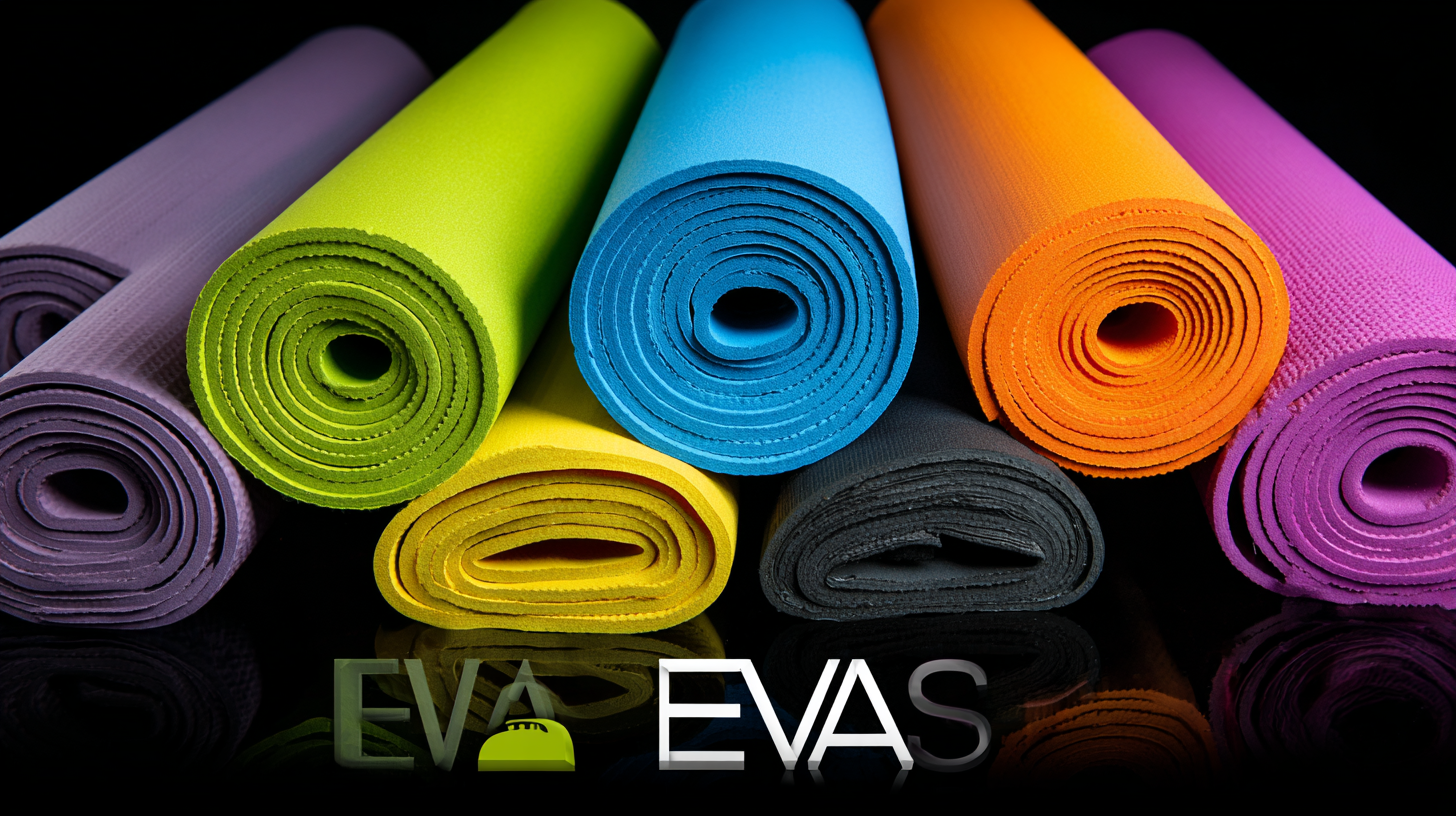In recent years, the demand for EVA foam mats has surged globally, driven by their versatility and ability to enhance safety in various environments, including homes, gyms, and play areas. According to a recent market research report by Mordor Intelligence, the global EVA foam market is projected to reach USD 10.96 billion by 2026, growing at a CAGR of 6.3% during the forecast period. This significant growth underscores the increasing popularity of EVA foam mats among consumers and businesses alike, as they offer a durable, lightweight solution that caters to a broad array of applications. As buyers seek to make informed choices, understanding the factors influencing the selection of the best EVA foam mats becomes essential. This tutorial aims to equip global buyers with the knowledge needed to navigate the diverse offerings in the market, ensuring they choose products that not only meet their needs but also adhere to the highest standards of quality and safety.

 EVA foam, or ethylene-vinyl acetate foam, is a versatile material that has gained popularity across various industries due to its unique properties.
One of the standout features of EVA foam is its exceptional shock absorption capabilities, making it an ideal choice for applications ranging from sports mats to playground surfaces.
This cushioning effect not only protects users from injuries but also enhances comfort during physical activities.
Additionally, EVA foam is lightweight yet durable, providing a balance between ease of handling and long-term performance.
EVA foam, or ethylene-vinyl acetate foam, is a versatile material that has gained popularity across various industries due to its unique properties.
One of the standout features of EVA foam is its exceptional shock absorption capabilities, making it an ideal choice for applications ranging from sports mats to playground surfaces.
This cushioning effect not only protects users from injuries but also enhances comfort during physical activities.
Additionally, EVA foam is lightweight yet durable, providing a balance between ease of handling and long-term performance.
Another significant benefit of EVA foam is its resistance to moisture and UV rays, which means it can withstand outdoor conditions without degrading.
This makes it an excellent option for poolside areas, spas, and outdoor fitness spaces.
Furthermore, EVA foam is non-toxic and eco-friendly, appealing to health-conscious consumers and those seeking sustainable options.
With its array of colors and textures, it also offers aesthetic appeal, allowing buyers to select mats that not only function well but also complement their spaces effectively.
The demand for EVA foam mats is set to experience significant growth by 2025, driven by various factors including increased awareness about fitness, wellness, and the need for safe play environments for children. According to a market research report by Grand View Research, the global EVA foam market size was valued at USD 1.03 billion in 2020, with projections indicating a compound annual growth rate (CAGR) of around 5.5% from 2021 to 2025. This growth is largely attributed to the rising adoption of EVA foam mats in residential and commercial spaces, especially in fitness centers, yoga studios, and schools.
Moreover, the increasing focus on health and fitness has led to a surge in the use of EVA foam mats among consumers for activities such as yoga, Pilates, and other workout routines. A study conducted by Technavio highlighted that the fitness segment is anticipated to account for the largest share of the EVA foam mats market, showing a significant increase in demand as consumers prioritize their health and physical activities post-pandemic. Additionally, the versatility of EVA foam materials, which offer cushioning and durability while being lightweight, makes them an ideal choice for various applications—further propelling market growth in the coming years.
When choosing EVA foam mats, safety should be your top priority, especially for children. Recent studies have highlighted the importance of evaluating volatile chemicals in children's play mats, revealing a potential risk hierarchy among materials. EVA mats, widely used for their cushioning and durability, may contain various chemical additives. Therefore, it is crucial to ensure that the EVA foam mats you select are non-toxic and free from harmful substances. Look for products that adhere to strict safety standards and have passed rigorous testing for volatile organic compounds (VOCs).
Incorporating stylish and safe options like some contemporary play mats can also enhance the play environment. With Scandinavian designs gaining popularity, it’s possible to find aesthetically pleasing mats that combine function with fashion. Ensuring that these mats are made from non-toxic materials not only contributes to a healthier environment for children to play but also offers peace of mind for parents.
When purchasing, always check for certifications and safety verifications that confirm the mat’s compliance with health regulations, thus safeguarding your little ones during their playtime.
When it comes to selecting EVA foam mats, a pivotal aspect for global buyers is weighing cost-effectiveness against quality. In many cases, consumers are lured by cheaper options that promise to meet their needs. However, it's essential to recognize that while these budget-friendly mats may save money initially, they often compromise on quality. Lower-quality EVA foam mats can wear out more quickly, posing a risk of injury or discomfort during use. Therefore, the long-term costs associated with frequent replacements can ultimately surpass the savings made on the initial purchase.
On the other hand, investing in higher-quality EVA foam mats may reflect a greater upfront expense but provides significant advantages. Quality mats are engineered to withstand heavy usage, offering improved durability, better cushioning, and superior safety features. This not only enhances the overall experience but also reduces the risk of injury in various environments, from gyms to homes. Thus, while the initial investment may be daunting, the long-term benefits of high-quality EVA foam mats often outweigh the initial cost, highlighting the importance of making an informed decision that prioritizes both quality and value.
| Dimension | Material Quality | Cost per Square Meter (USD) | Thickness (mm) | Durability Rating (Years) | Anti-Slip Feature | Color Variety |
|---|---|---|---|---|---|---|
| 60x60 cm | High Density | 15 | 15 | 5 | Yes | 5 Colors |
| 50x50 cm | Standard | 10 | 12 | 3 | No | 3 Colors |
| 100x100 cm | Premium Grade | 20 | 20 | 7 | Yes | 8 Colors |
As the demand for EVA foam mats continues to rise globally, emerging technologies are set to revolutionize their production and design. Innovations such as advanced polymer chemistry are enabling manufacturers to create EVA foam with enhanced durability and flexibility. This is particularly significant for industries like sports, where high-performance mats can withstand intense usage while providing superior cushioning and support.
Tip: When choosing EVA foam mats, look for options that incorporate these new technologies. Mats with improved shock absorption and moisture resistance can enhance your overall experience, especially in high-activity environments.
Moreover, the incorporation of smart technologies is also making its way into EVA foam design. For example, mats embedded with sensors can monitor temperature and pressure, providing real-time feedback for users. These advancements not only improve safety but also enhance the user experience by allowing for personalized adjustments based on individual needs.
Tip: Consider evaluating the features of smart EVA mats if you're seeking enhanced functionality. Such innovations may add an extra layer of comfort and adaptability, making them a worthwhile investment for both personal and commercial use.

